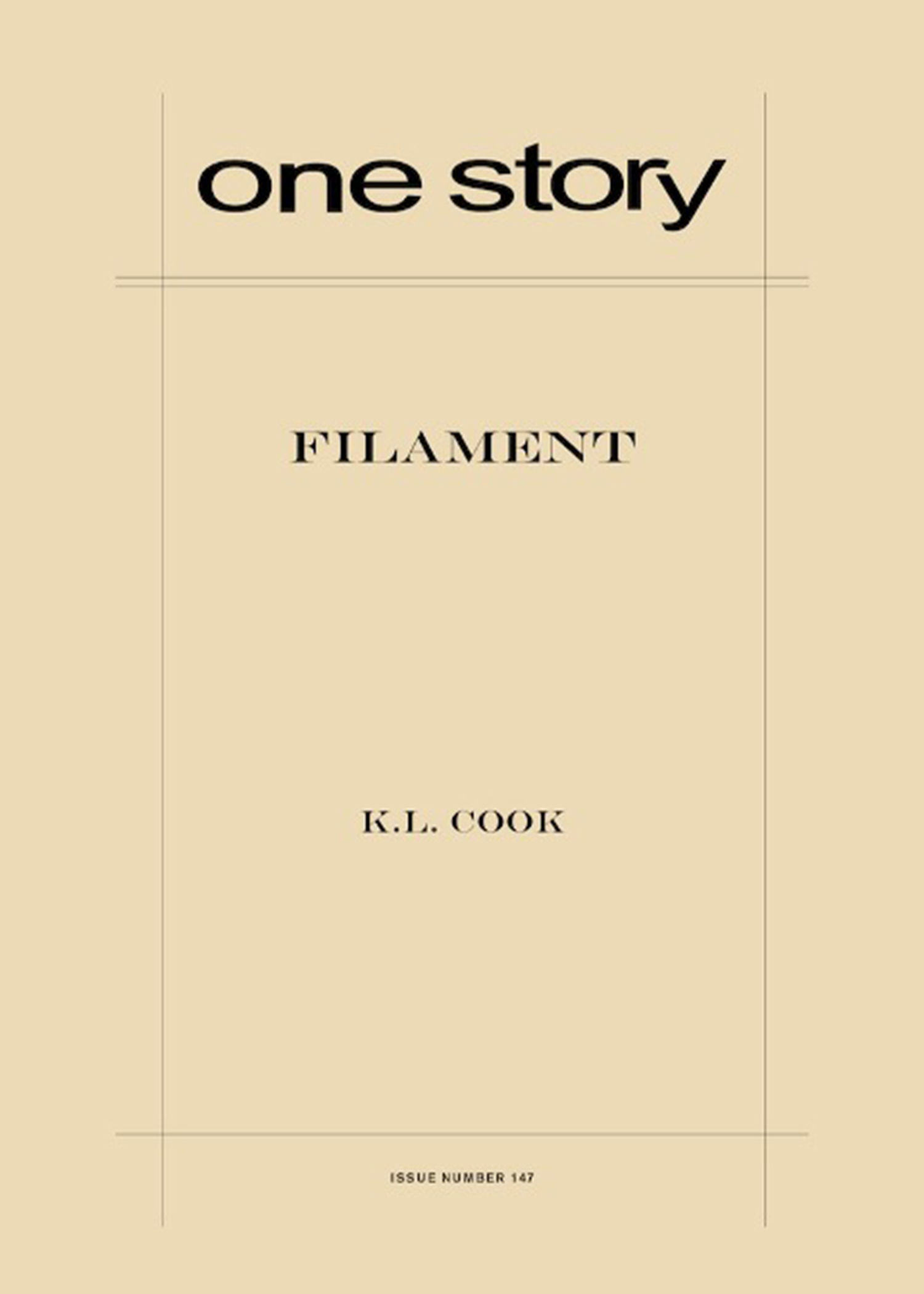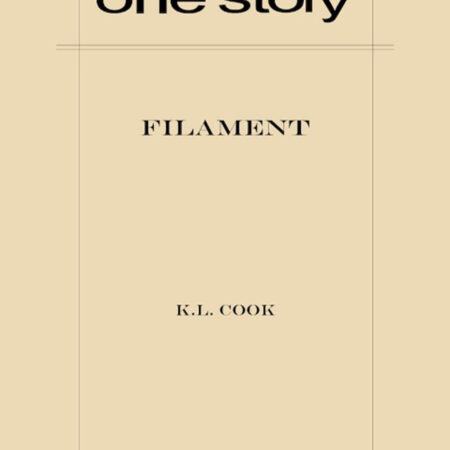
Filament
$2.50
59 in stock
Excerpt
When she was seventeen, Loretta discovered that she was pregnant with Blue Simpson’s child, a shame really. Not because Tildon turned out to be a bad son. (In fact, he would do quite well, thirty-two years later, buying and operating a chain of successful southern fried chicken franchises.) It’s just that Loretta’s future seemed genuinely promising before this turn of events. She’d graduated high school as the valedictorian when she was sixteen. Granted, this was in Honey Grove, Texas, so there were not that many students, certainly not that many bright ones, but she had nonetheless impressed her teachers enough to skip a couple of grades, and then went off to college in Denton on a full scholarship to study journalism. In Denton, she met Blue, a strawberry-headed pipe fitter and apprentice welder from Bug Tussle who liked to two-step. At the beginning of her sophomore year, he took her dancing every night for three straight weeks. By the end of that time, Tildon was conceived. Blue and Loretta hastily married during a freakish October snowstorm, and she gave up her academic pursuits and, until after Blue’s death, her dream of becoming a reporter.
K.L. Cook
K. L. Cook is the author of a novel, The Girl from Charnelle (William Morrow/Harper Perennial), winner of the WILLA Award for Contemporary Fiction and named to several lists of best books of 2006, and a collection of linked stories, Last Call (Nebraska), which won the inaugural Prairie Schooner Book Prize in Fiction. His new collection, Love Songs for the Quarantined, in which “Filament” appears, won the 2010 Spokane Prize for Short Fiction and will be published in fall 2011 His fiction and essays have appeared in numerous literary journals, magazines, and anthologies, including Glimmer Train, Prairie Schooner, Poets & Writers, The Writer’s Chronicle, Threepenny Review, The Louisville Review, Brevity, American Short Fiction, Shenandoah, Witness, Harvard Review, The 2011 Best of the West, When I Was a Loser: Essays on (Barely) Surviving Adolescence, and Teachable Moments: Essays on Experiential Education. He lives in Arizona with his wife, the playwright Charissa Menefee, and their children, and teaches at Prescott College and in Spalding University’s brief-residency MFA in Writing Program. His website is www.klcook.com.
Q&A by Hannah Tinti
- HT: Where did the idea for this story come from?
- KC: My grandmother was the original writer in the family—a reporter and editor in the Texas Panhandle for close to sixty years before her death. In her late eighties, she was still filing three stories a week for The Childress Index. Her life was not an easy one, but I always admired her fierce devotion to her vocation as a journalist. The character of Loretta is based on her, though the plot is all fiction.
- HT: Most of your work is set in Charnelle, Texas . What keeps bringing you back to this small, panhandle town?
- KC: I have set other stories and novels in different places, but Charnelle is a place of my own invention, cobbled together from many small towns encircling Amarillo . I’ve always been inspired by writers who have carved out their imaginary postage stamps of the universe, to paraphrase Faulkner. I’m thinking of Faulkner’s Yoknapatawpha County, but also of Louise Erdrich’s North Dakota, Larry McMurtry’s Thalia, James Joyce’s Dublin, Alice Munro’s rural Ontario, Richard Russo’s Mohawk, Charles Baxter’s Five Oaks...the list goes on and on. We’re talking about the place of the heart. I was born and spent a significant part of my life in the Texas Panhandle. Although I haven’t lived there in more than twenty-five years, it’s still the place my imagination naturally returns to with a mixture of pain, love, and ambivalence—a good mix for fiction.
- HT: “Filament” drifts seamlessly between many different points of view. Why did you choose to tell the story this way, going into each character’s mind?
- KC: I’ve long wanted to write a story using full-blown omniscience—a voice able to move forward and backward in time and, catlike, in and out of the consciousness of many different characters. The omniscient point of view is particularly well-suited to stories that focus on a community rather than one or two individuals. I loved the liberation and the generosity of this point of view. I didn’t just want to write Loretta’s story; I was interested in the way the other characters, and even the town itself, are all drawn in and irrevocably affected by the murder. So my forays, some brief and some more extensive, into the perspectives of Blue, the children, Fortney, the sheriff, Hef Givens, and others are an important part of the conception and vision of the story.
- HT: What was the most challenging aspect of writing this story?
- KC: I loved writing in the omniscient voice. I loved telling a more novelistic story. I love reading these kinds of narratives—by Tolstoy, Sherwood Anderson, and Chekhov, as well as Joan Silber, Annie Proulx, and Alice Munro. The challenge is: how to tame the beast? My early drafts were much longer and covered many more years in the lives of the characters, both before and after the murder. Although I’m pleased with this version of the story, these characters and this world are still very much alive for me, which may mean that I also have a novel on my hands. That would be a good thing.
- HT: The descriptions of Blue’s welding job, and the piece of filament in his eye, are so precise. Do you have any experience in this line of work, or is it just the result of good research?
- KC: My grandfather was a skilled welder and still owned his own welding shop until the day he died, in his nineties. I vividly remember those burn holes in his work shirts and coveralls and the way his skin was pocked with small heat blisters. My great nightmare—imagining his world when I was a child and later as a writer—was the possibility of hot steel in the eye. How that possibility could change the course of a whole life became the guiding metaphor for the story.
- HT: “Filament” feels like a tragic love story. How you can love someone and hate them at the same time. Was that what you set out to write? Or was it more about the promise of beginnings?
- KC: Both of those interpretations are good readings of the story—though I’m not sure I could have articulated those themes when I began writing it. I do know this: whenever an event or a relationship contains contradictory emotions—characters feeling many things simultaneously—I know I’m on the right track. Marriage offers the richest, most complicated kind of relationship, especially for people for whom divorce or separation is not a readily available option. The promise of beginnings—I like the sound of that. Looking back on my work, I see that I have clearly been obsessed with the long-term promises we make not only to others (spouses, lovers, parents, children, brothers, sisters, friends) but more importantly to ourselves. There’s always an interesting story embedded in the way we negotiate those promises and how we sometimes come circuitously around to our original aspirations, as I believe Loretta does. She wants to be a journalist; her marriage and motherhood derail that promise she made to herself. How she negotiates that derailment seems to me to be one of the things the story is about.
- HT: What’s next for Loretta? Will she ever be a reporter?
- KC: Oh, yes. Even though I cut the extended epilogue about her career in journalism, everything is spelled out in the first paragraph of the story: Blue’s death and her return to her vocation.
- HT: How does this story, “Filament,” connect with the others in your forthcoming collection, Love Songs for the Quarantined? (scheduled for publication in fall What was the most challenging aspect of writing this story0Where did the idea for this story come fromWhere did the idea for this story come from)
- KC: They’re all love songs—love stories—but love songs for those who have been quarantined or have quarantined themselves. Literally in some cases. Always figuratively.
- HT: How long did it take you to complete this story?
- KC: I started writing a draft in Wyoming in the summer of 2007 and continued to expand and revise it, while also working on other stories in the collection. That’s normal for me. Stories take a long time to simmer, and I enjoy that process. I also enjoy the way the different stories simmer together, counterpointing and calling to one another.
- HT: What are you working on now?
- KC: I just finished a draft of a novel about a character from some earlier stories—a man who once schemed to buy Costa Rica, a scheme that went disastrously wrong. A significant portion of the book takes place in my fictional town of Charnelle.
- HT: What is the best bit of advice about writing you have ever received?
- KC: Every story is a love song.
